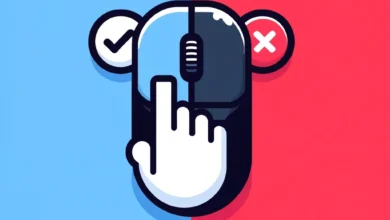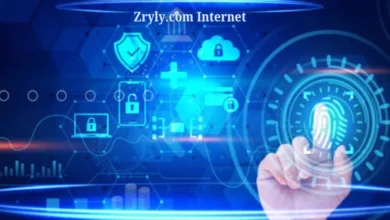What You Need to Know About thejavasea.me Leaks A Deep Dive into AIO-TLP

In the ever-evolving world of cybersecurity, data breaches, leaks, and hacking incidents are a constant threat. Among the latest developments in this area is the controversy surrounding the site thejavasea.me Leaks and its association with what is referred to as thejavasea.me Leaks. But what exactly does this mean? And why is it causing such a stir within digital communities? In this article, we’ll take a detailed look at the thejavasea.me leaks unpack the concept of AIO-TLP, and discuss the implications of these types of data breaches in modern cybersecurity.
What is thejavasea.me?
At the core of the controversy lies thejavasea.me Leaks, a website that has gained attention for hosting data leaks and offering tools or services that cater to individuals with certain illicit interests. While much of the information regarding the website remains unclear, it’s widely believed to be a platform involved in facilitating the exchange of personal and private data, often obtained through unauthorized means.
The website’s name is associated with various security threats, including the leaking of sensitive data, login credentials, and other private information. Its reputation has drawn the attention of cybersecurity professionals, law enforcement agencies, and the general public who are concerned about the increasing frequency of cyberattacks and the consequences of compromised data.
Understanding AIO-TLP
Before delving further into the AIO-TLP aspect of the leaks, it’s important to understand what AIO and TLP refer to in this context.
AIO – All-In-One Tools
AIO stands for All-In-One, and in the context of cybercrime and hacking, it refers to tools or software that allow users to perform multiple tasks in one application. These tools are often used to automate various steps involved in compromising systems, stealing data, and bypassing security measures.
In the case of the AIO-TLP leaks, the term suggests that the leaked content is not limited to a single type of tool or file. Instead, it includes a comprehensive package of tools, exploits, and resources that enable users to carry out a wide range of illegal activities.
AIO tools can serve many functions, from credential stuffing (using stolen login details across various sites) to facilitating botnet attacks (coordinated malware attacks through infected devices). These tools make it easier for even those with limited technical knowledge to engage in hacking activities, which has contributed to the growing number of cybercrimes worldwide.
TLP – The Leak Protocol
The term TLP is short for The Leak Protocol, a term used within certain dark web or hacking circles to describe a method of distributing and sharing leaked data. This can include anything from personal accounts and passwords to proprietary corporate data or government documents.
The TLP leak method is often seen in the form of “dumped” data sets, where huge amounts of stolen or hacked data are shared widely across hacker forums and illicit online spaces. These leaks usually include a comprehensive compilation of various types of sensitive data, such as usernames, passwords, email addresses, credit card information, and more. The TLP framework indicates that the leak is intended for wide distribution among users, often leading to further exploitation of the stolen data.
Thus, AIO-TLP refers to a leaked bundle of All-In-One tools designed for various forms of cyberattacks and The Leak Protocol data dumps that provide malicious actors with an assortment of stolen personal and corporate information.
How Do These Leaks Impact Individuals and Organizations?
The AIO-TLP leaks have far-reaching consequences for both individuals and organizations. The data shared in these leaks often includes:
- Stolen Personal Data: This can include usernames, passwords, phone numbers, email addresses, and even private communications. For individuals, this means a heightened risk of identity theft, online fraud, and unauthorized account access.
- Financial Information: If banking details, credit card numbers, or other financial data are included in the leaks, the potential for financial theft is substantial. Cybercriminals can make fraudulent transactions, access bank accounts, or sell this data on the dark web.
- Corporate Secrets and Intellectual Property: If companies’ proprietary information is leaked through these tools, it could lead to major financial losses, reputational damage, and even legal consequences. Competitors or malicious actors might use the data for corporate espionage or other illicit purposes.
- Security Breaches: The availability of tools in AIO-TLP leaks means that even novice cybercriminals can bypass security measures such as two-factor authentication or encryption, making it easier for them to exploit organizations or individuals.
Why Do These Leaks Happen?
Understanding why such leaks occur is important for developing strategies to prevent them. There are several reasons why data breaches, like those associated with thejavasea.me and AIO-TLP, happen:
- Weak Security Measures: Many data leaks occur due to poor security practices. Weak passwords, outdated software, and poorly configured systems are often easy targets for attackers. Once a hacker gains access to an organization or individual’s system, they can collect sensitive information to sell or exploit.
- Human Error: Employees or individuals can inadvertently expose sensitive information by clicking on malicious links, falling for phishing scams, or using the same login credentials across multiple platforms. Cybercriminals often exploit these human errors to gain access to valuable data.
- Advanced Hacking Techniques: As hacking tools like AIO packages become more sophisticated, the technical knowledge required to carry out cyberattacks has decreased. Even those with limited skills can launch successful attacks, which increases the frequency of breaches.
- The Growing Dark Web Economy: There is a booming underground economy where stolen data, hacking tools, and illegal services are bought and sold. Websites like thejavasea.me and forums that distribute AIO-TLP leaks are part of this ecosystem, making it easier for criminals to access and sell stolen data.
Mitigating the Risks: What Can You Do?
Given the prevalence of data leaks like those seen with AIO-TLP, it’s crucial to take steps to protect yourself and your organization from these risks. Here are some strategies:
- Use Strong Passwords: Always use unique, complex passwords for every account. Avoid reusing passwords, as one breach can lead to access to multiple accounts. Consider using a password manager to securely store your passwords.
- Enable Two-Factor Authentication (2FA): Even if your password is compromised, 2FA provides an extra layer of security. Many platforms now offer 2FA as an optional security feature—always enable it where possible.
- Stay Informed About Breaches: Regularly check if your data has been compromised by visiting websites like Have I Been Pwned. This allows you to stay informed and take immediate action if any of your accounts are at risk.
- Educate Employees: For organizations, training employees on cybersecurity best practices is vital. Employees should be aware of common phishing techniques, the importance of strong passwords, and the dangers of downloading suspicious files or using untrusted tools.
- Regularly Update Software and Systems: Cybercriminals often exploit known vulnerabilities in outdated software. Keeping your operating systems, applications, and security software up to date ensures that you have the latest protections in place.
Conclusion
The thejavasea.me leaks and the associated AIO-TLP tools represent a serious threat to both individuals and organizations. With sophisticated tools and widespread data dumps, cybercriminals are better equipped than ever to exploit weaknesses in systems and steal sensitive data. However, by staying informed, using strong security practices, and being proactive about cybersecurity, you can mitigate the risks posed by these and similar breaches.
As we continue to rely more heavily on digital platforms for everything from banking to personal communication, the importance of securing our data has never been greater. Cybersecurity is no longer just an IT concern; it’s a shared responsibility that requires vigilance and constant adaptation to evolving threats.




